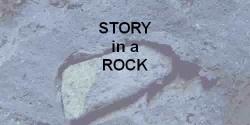Exploding Water
Exploding Water - Geysers in Iceland
The Icelandic geyser is a rare kind of hot spring that is under pressure and erupts, sending jets of water and steam into the air.
Geysers are made from a tube-like hole in the Earth's surface that runs deep into the crust.
The tube is filled with water.
Near the bottom of the tube is molten rock called magma, which heats the water in the tube.
Magma lies close to the surface throughout Iceland due to its high levels of volcanic activity.

Water in the lower part of the tube, close to the magma, becomes superhot.
Gradually, it begins to boil. Some of the water is forced upward.
The boiling water begins to steam, or turn to gas. The steam jets toward the surface.
Its powerful jet of steam ejects the column of water above it. The water rushes through the tube and into the air.
The eruption will continue until all the water is forced out of the tube, or until the temperature inside the geyser drops below boiling (100 degrees Celsius,at sea level).
After the eruption, water slowly seeps back into the tube. The process begins again. In some small geysers, the eruption process can take just a few minutes. In larger geysers, it can take days.
Iceland has some of the best example of geysers on the planet.
Learn more about PLATE TECTONICS and HOT SPOTS

